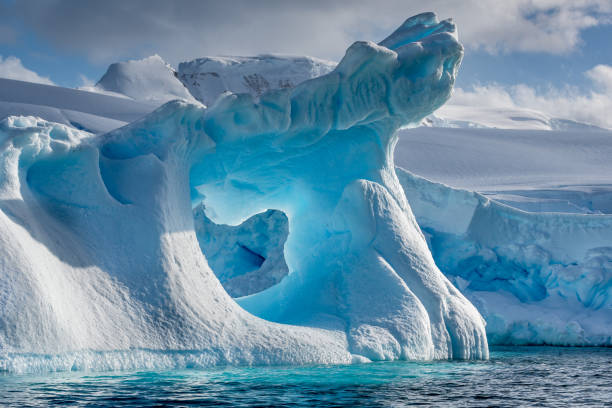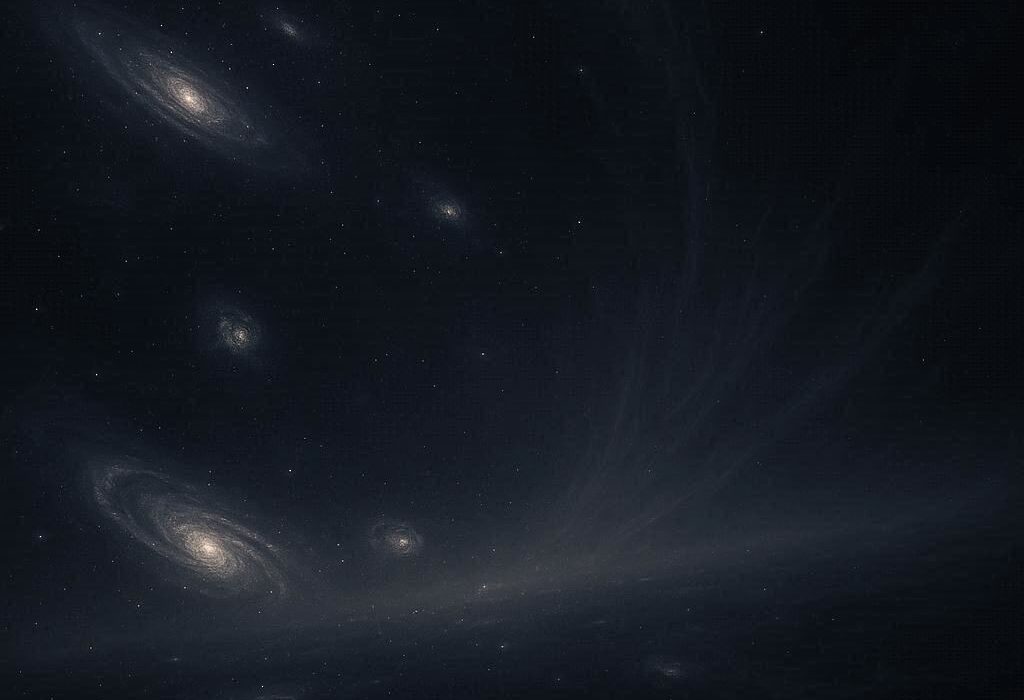At the bottom of our planet lies a land cloaked in ice, so vast and forbidding that for centuries it existed more as myth than reality. Antarctica, Earth’s southernmost continent, is not merely a desert of snow but a frozen library of time. Beneath its windswept plains and jagged glaciers lies a record of Earth’s climate history, preserved in layer upon layer of ice. Each snowfall that fell thousands, even hundreds of thousands, of years ago has been compressed into crystalline archives, storing secrets of the planet’s past. Scientists have learned to read these frozen pages, and what they reveal is as breathtaking as it is sobering.
Ice cores—cylindrical samples drilled from deep within Antarctica’s ice sheets—are windows into a world long gone. Trapped within them are air bubbles, tiny pockets of ancient atmosphere, carrying whispers of climates that flourished and vanished. They tell of shifting oceans, collapsing ecosystems, volcanic eruptions, and the relentless heartbeat of Earth’s ice ages. They speak of humanity’s growing footprint on the planet, and of futures that may yet unfold. To study them is to peer into time itself.
The Birth of the Ice Core Quest
The story of ice core research begins in the mid-twentieth century, when scientists first realized that ice could serve as a time capsule. The Antarctic continent, covered by ice up to four kilometers thick, seemed almost impenetrable. Yet researchers dared to imagine: if one could drill deep enough, one could unearth the climate of ages past. Early expeditions in Greenland and Antarctica confirmed this dream. The deeper they drilled, the older the ice became, with each annual layer like the growth rings of a tree.
What astonished scientists most was the discovery that within the ice were bubbles of ancient air. These tiny spheres preserved the exact composition of the atmosphere at the time they were sealed. Unlike sediment cores or fossils, which offer indirect clues, ice cores hold the atmosphere itself, unaltered, uncorrupted, waiting patiently for discovery. Suddenly, humanity had access to a direct archive of Earth’s breathing, stretching back not centuries but hundreds of millennia.
As drilling technology advanced, so too did ambition. International collaborations pushed deeper into the ice sheet. The European Project for Ice Coring in Antarctica (EPICA), the U.S.-led WAIS Divide project, and others set out to retrieve the deepest, oldest ice. Each breakthrough brought new revelations, rewriting the story of climate and life on Earth.
Reading the Layers of Time
At first glance, an ice core may look unremarkable—just a cylinder of frozen water. But when studied with precision, it transforms into a chronicle of climate. Layers of snow accumulate year by year, compacting into firn and finally into solid ice. Within these layers are fingerprints of time: the thickness of the layer reveals snowfall amounts, while chemical compositions reveal temperatures, ocean currents, even wind patterns from distant continents.
Volcanic eruptions leave distinct chemical signatures—sulfuric acid and ash trapped in the ice. Cosmic events, like solar flares, can leave isotopic traces. Dust particles carried by ancient winds settle into layers, speaking of deserts that expanded or shrank across the globe. Most remarkably, the air bubbles provide the exact concentration of greenhouse gases such as carbon dioxide and methane, allowing scientists to map how Earth’s atmosphere has changed over time.
The deepest cores reach back nearly 800,000 years, capturing eight complete glacial cycles—periods when Earth swung between icy expanses and warmer interglacial phases like the one we live in today. These cores reveal not only what happened but also the rhythm of why it happened: the subtle dance of Earth’s orbit around the Sun, the tilts and wobbles that influence climate, and the amplifying effects of greenhouse gases.
Secrets of Ice Ages
The ice cores tell us that Earth’s climate has never been static. Over the past million years, the planet has oscillated between deep freezes and warmer interludes. During glacial periods, vast ice sheets advanced over North America and Eurasia, locking away water and lowering sea levels by over 100 meters. In warmer interglacials, ice retreated, seas rose, and ecosystems flourished in new ways.
These swings were triggered by slow changes in Earth’s orbit and tilt—cycles known as Milankovitch cycles. Yet the ice cores reveal that greenhouse gases acted as amplifiers. When carbon dioxide and methane rose, warming followed. When they fell, ice spread. The cores demonstrate a tight coupling between greenhouse gases and temperature: when the air trapped in the ice contained more carbon dioxide, the planet warmed; when it contained less, the planet cooled.
This natural dance of ice ages is etched into the cores with startling clarity. Tiny variations in gas levels align precisely with shifts in temperature, revealing a delicate balance that governed life on Earth. Humanity, the cores whisper, has entered this ancient rhythm—but with a force unlike any before.
Volcanic Shadows and Cosmic Echoes
Not all stories in the ice are gradual. Some are sudden, violent, and catastrophic. Volcanic eruptions, for example, leave clear fingerprints. The eruption of Indonesia’s Mount Tambora in 1815, which triggered the infamous “year without a summer,” is preserved as a sharp chemical spike. Older eruptions, long forgotten in human memory, are etched just as clearly, revealing the global scale of their influence.
Some layers hint at cosmic disturbances—subtle shifts in isotopes caused by solar storms or cosmic rays. These records give scientists insights into the Sun’s behavior across millennia, offering a cosmic context to Earth’s climate. In this sense, the ice cores do not merely preserve Earth’s story but also its place in the wider universe.
The Human Fingerprint
Perhaps the most startling revelation of ice cores is the story of humanity’s impact. For hundreds of thousands of years, carbon dioxide levels never rose above 300 parts per million. Then, with the Industrial Revolution, the cores show a sharp, unprecedented spike. Today, atmospheric CO₂ has surpassed 420 parts per million—far higher than anything seen in the 800,000-year record.
The cores reveal that such rapid change is unnatural. In past cycles, shifts in greenhouse gases took thousands of years; today, humanity has altered the atmosphere in less than two centuries. This acceleration is visible in the ice, a signature of our species etched permanently into Earth’s deep memory.
This human fingerprint carries a warning. Past increases in carbon dioxide were linked with dramatic warming and melting ice sheets. The cores show that when ice melted, seas rose dramatically, reshaping coastlines and ecosystems. By comparing past patterns with present trends, scientists can project futures where Antarctica itself may lose vast amounts of ice, raising sea levels and reshaping human civilization.
A Landscape of Memory
Beyond the data, the physical presence of ice cores carries an emotional weight. Imagine holding a cylinder of ice in your hands that formed when mammoths roamed the Earth, or when early humans painted caves in Europe. Within that ice is the very air they breathed, sealed away until this moment. It is as if the planet itself kept a diary, written not in words but in crystals and bubbles.
For scientists working in Antarctica, each core is more than a sample. It is a fragile link to deep time, requiring care, precision, and reverence. The drilling teams endure months in the harshest environment on Earth, battling blizzards, isolation, and bitter cold, all for the chance to bring back these treasures. Their work is an act of devotion—not only to science but to the future, for what is revealed in the ice is crucial to the choices humanity makes today.
Antarctica’s Melting Future
The irony of Antarctica’s frozen secrets is that they are threatened by their own revelations. The warming of Earth today is melting the very ice that preserves its past. Glaciers once thought stable are retreating, ice shelves are collapsing, and warming oceans are eroding the continent from below. Scientists warn that Antarctica’s vast ice sheets hold enough water to raise global sea levels by more than sixty meters. Even a fraction of that would redraw coastlines, displace millions, and transform human society.
The ice cores remind us that the climate system can change dramatically, and that ice is not eternal. It responds, sometimes swiftly, to shifts in temperature and greenhouse gases. The story they tell is not only of past worlds but of possible futures—futures humanity still has the power to influence.
The Poetry of Ice
To walk among the ice sheets of Antarctica is to walk in silence, broken only by the wind and the distant groan of shifting glaciers. Yet within that silence lies a chorus of voices from the past. Each bubble of air, each layer of snow, is a fragment of a story billions of years in the making.
There is something profoundly human about the desire to read these stories. We are, after all, storytellers by nature, seeking meaning in patterns, connection in time. The ice cores give us not myths or legends but the raw truth of Earth’s history. They remind us that our world is fragile, dynamic, and interconnected. They call upon us not only to wonder but to act.
Guardians of the Frozen Record
As climate change accelerates, the urgency to preserve and study ice cores has grown. Scientists are now racing to retrieve the oldest ice, aiming to reach back beyond 1.5 million years, into a period when the rhythms of ice ages shifted dramatically. Unlocking that record could answer fundamental questions about why the cycles changed and how Earth’s climate evolved.
At the same time, efforts are underway to store ice cores safely for future generations. Facilities like the Ice Core Archive in Antarctica and repositories in Europe and the United States safeguard samples against loss. These repositories are not only scientific vaults but also cultural ones, preserving a legacy of knowledge for those who will inherit the consequences of today’s choices.
A Final Reflection
Antarctica’s ice is not merely frozen water. It is memory, testimony, and prophecy. It holds within it the breath of ancient forests, the smoke of long-dead volcanoes, the trace of distant deserts, and the first marks of human industry. It tells us that Earth’s climate is not unchanging but alive, responsive, and deeply vulnerable to disruption.
To study ice cores is to realize that the present moment is not separate from the past. We are part of a continuum stretching across ice ages, a continuum now in jeopardy. The story of Antarctica’s secrets is ultimately the story of ourselves—our origins, our choices, and our shared future.
In the end, perhaps the greatest lesson the ice cores teach is humility. They remind us that we live in a world far older and more powerful than we can easily comprehend. Yet they also remind us of our responsibility: to listen to the warnings written in ice, to act with foresight, and to ensure that the frozen voices of the past are not drowned by the silence of a future we failed to protect.






